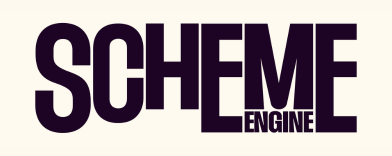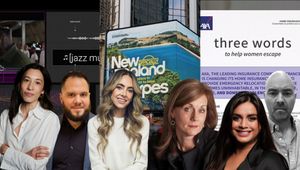
Here’s How DDB Group Melbourne and Solid Lines Launched the Banned Aboriginal Flag Emoji

DDB Group Melbourne has worked with First Nations-led illustration agency Solid Lines to create an Aboriginal flag emoji, plus 64 additional flag emojis representing Indigenous communities and minority groups from across the world.
While 268 flags are available in emoji form in Australia, the Aboriginal flag -- representing the oldest continuous living culture in the world, and 60,000 years of First Nations history and visibility -- was previously missing from Apple’s emoji suite, despite change.org petitions, viral posts, and news stories calling for its inclusion.
In 2019, DDB Group Melbourne and Solid Lines asked Unicode, the international consortium responsible for developing and updating the emoji keyboard, to add the Aboriginal flag. The request was rejected. In 2024, they asked again, and were again rejected.
So when Apple announced the launch of Genmoji -- a feature allowing users to create personalised emojis using Apple Intelligence -- the agencies used developer tools from the US before the tech went live to create prompts that would result in an Aboriginal flag emoji, while bypassing Apple Genmoji’s ban on the word ‘flag’. Terms such as ‘Aboriginal’ and ‘First Nations’ were also not recognised by the Genmoji system.

In December, coinciding with the day Genmoji went live in Australia, the prompts were released via a social campaign. Users with iPhones operating on IOS 18.2 or above can open their keyboard, select the emoji icon, and add the following prompt: “A wavy black and red rectangle with a medium sized yellow circle in the middle.”
Kimberly Engwicht, creative director of K-Rae Designs, a digital illustration and stationery company located on Yuggera Country in Brisbane, Queensland, shared her work across socials, accompanied by the flag emoji, when the emoji launched.
"Including the Aboriginal flag honours my people and the oldest living culture, acknowledging the deep connection, resilience and wisdom of a history that stretches back tens of thousands of years,” she said.
“It's vital for validating and celebrating our culture on a widespread scale, ensuring that our stories are seen, heard and respected.”

By mid-December, Google Gemini ensured the emoji appeared for anyone googling ‘the Aboriginal flag emoji’.
The agencies have since created 64 additional flag emojis to represent more than 250 million people who previously lacked digital access to their flag. These communities include Kurdish, Catalonian, Pan-African, Romani, Métis Nation of Canada, Yazidi, Riffian, Tigrayan, and various LGBTQIA+ communities.

“The ‘Forbidden Flagmoji’ inspired a global response, with minority communities worldwide calling for their own flag emojis across Facebook and Instagram,” DDB Group Melbourne CCO Psembi Kinstan told LBB.
“Some of these flags had petitions with over 100,000 people calling on their release, so to play a part in ensuring their digital representation is an incredible thing to be a part of.”
Western Arrarnta, Luritja and Kokatha man, creative artist, and Solid Lines co-founder, Emrhan Tjapanangka Sultan, added, “The Aboriginal flag plays a very important role within our communities, representing who we are as Aboriginal people right across the country. This is very important for us, particularly in the digital space. It's who we are, part of our community, and we want to be able to share it with the rest of the world.”

The campaign ran again in line with Invasion Day in January, via a number of donated media placements. Mango group account director Emily Perry noted the response included “journalists and influencers sharing the Aboriginal Genmoji flag across Stories and in-feed, sparking further conversation on bridging the digital gap.”
“It was a privilege to work alongside Solid Lines and consultants across First Nations communities in helping drive real change in digital representation,” she said.















